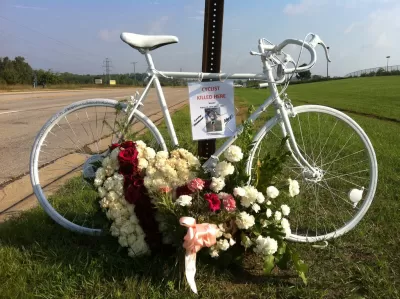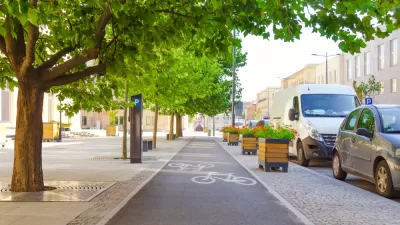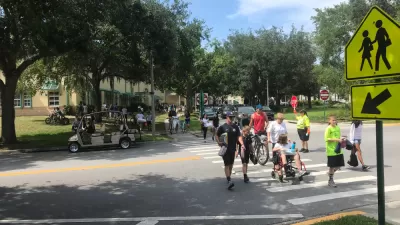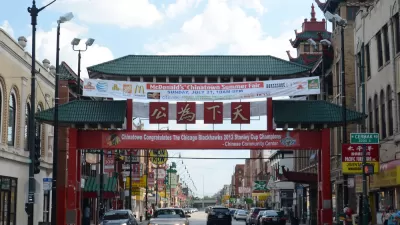What do traffic safety and gun violence have in common? A lot, as it turns out. In both cases, hard-hit neighborhoods tend to have suffered from historical disinvestment along racial lines.

Although gun violence and traffic safety might seem like unrelated ills, their severity tracks with "race, class, and place," Hanna Love and Jennifer S. Vey write. "The lower a metro area's median household income, the more dangerous its streets are for people walking. And similar trends persist for gun violence."
In urban areas, neighborhoods populated mostly by people of color tend to be poorer than white areas. That de facto segregation is of course no accident: it was once de jure. High rates of car and gun violence "stem from the same historical inequities in how our cities were designed and built, in which intentional decisions by planners and policymakers divided our nation's physical landscape along racial lines," Love and Vey write.
They argue that addressing both problems means acknowledging that for disadvantaged communities, making streets safer will require more than mere bike lanes. "For those who are vulnerable to victimization when engaging in everyday tasks—like walking to buy snacks or to work—concerns about safety impact nearly every aspect of their lives."
Love and Vey advocate better engagement with residents, asking them what they want from their streets and investing in safety strategies already being developed and led by those in the community.
FULL STORY: To build safe streets, we need to address racism in urban design

Alabama: Trump Terminates Settlements for Black Communities Harmed By Raw Sewage
Trump deemed the landmark civil rights agreement “illegal DEI and environmental justice policy.”

Study: Maui’s Plan to Convert Vacation Rentals to Long-Term Housing Could Cause Nearly $1 Billion Economic Loss
The plan would reduce visitor accommodation by 25% resulting in 1,900 jobs lost.

Planetizen Federal Action Tracker
A weekly monitor of how Trump’s orders and actions are impacting planners and planning in America.

Study Links Covid and Poor Driving
The effects of the virus, including ‘brain fog,’ can make driving more difficult and dangerous.

Waymo Gets Permission to Map SF’s Market Street
If allowed to operate on the traffic-restricted street, Waymo’s autonomous taxis would have a leg up over ride-hailing competitors — and counter the city’s efforts to grow bike and pedestrian on the thoroughfare.

Parklet Symposium Highlights the Success of Shared Spaces
Parklets got a boost during the Covid-19 pandemic, when the concept was translated to outdoor dining programs that offered restaurants a lifeline during the shutdown.
Urban Design for Planners 1: Software Tools
This six-course series explores essential urban design concepts using open source software and equips planners with the tools they need to participate fully in the urban design process.
Planning for Universal Design
Learn the tools for implementing Universal Design in planning regulations.
Caltrans
Smith Gee Studio
Institute for Housing and Urban Development Studies (IHS)
City of Grandview
Harvard GSD Executive Education
Toledo-Lucas County Plan Commissions
Salt Lake City
NYU Wagner Graduate School of Public Service





























